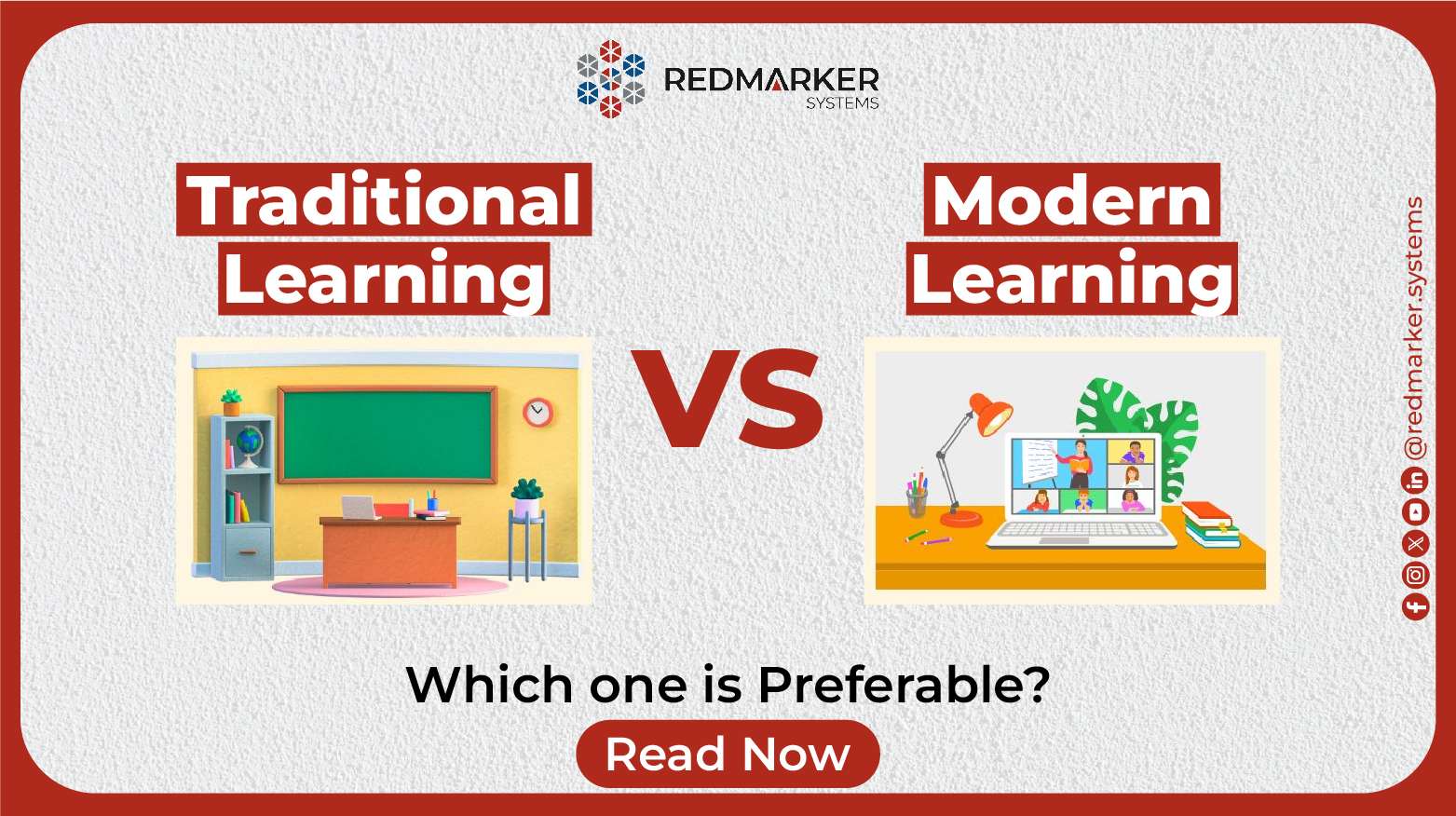Digital transformation is revolutionizing the world we live in, and the higher education sector is no exception. With the advent of innovative technologies, institutions are transforming their approach to teaching and learning, enabling a more personalized and effective experience for students.
From online learning platforms and virtual classrooms to AI-powered tools and big data analytics, digital transformation is reshaping how educators interact with students, deliver content, and track progress. Digital transformation in higher education is no longer a luxury but a necessity for institutions looking to stay relevant and competitive in this technological era. In this article, you can find all the information you need regarding the digital transformation of the higher education system. Let’s explore what the term “digital transformation” actually means!
Introduction to Digital Transformation
In higher education, digital transformation refers to the integration of technology into all aspects of education, including teaching, learning, administration, research, and student services. The concept extends beyond the realm of e-learning, encompassing the use of data and technology to optimize institutional operations for the benefit of academics, staff, students, and alumni.
In this digital era, it is an inevitable process that has become necessary due to the evolving needs of students, faculty, and institutions. Despite the ongoing technological revolution, many processes within Pakistan’s education system still rely on paper-based methods. It is crucial to explore all the intricacies of much-needed transformation in higher education to pave the way for a seamless transition to the digital system.
From online learning platforms and virtual classrooms to AI-powered tools and big data analytics, digital transformation is reshaping how educators interact with students, deliver content, and track progress. Digital transformation in higher education is no longer a luxury but a necessity for institutions looking to stay relevant and competitive in this technological era. In this article, you can find all the information you need regarding the digital transformation of the higher education system. Let’s explore what the term “digital transformation” actually means!
What Makes Digital Transformation Inevitable for Higher Education?
In today’s world, we carry powerful computers in our pockets, chat with our audio systems, and have self-driving cars. Every industry has been positively affected by rapid technological advancements, including the education sector. However, with so many sectors adapting to technological developments, higher education institutions take longer than average to modernize their systems; totally understandable!
It is no longer a choice but a necessary step for any industry to keep up with competition and survive in the long run. Here are some striking reasons why!
Evolving Needs of the Modern-Day Student
The student of today must learn to deal with new obligations and difficulties that previous generations of students did not. In order for students to maintain a balance between their studies, family obligations, and employment responsibilities, a flexible curriculum and class schedule is to be curated.
Increased Student Recruitment and Retention
There are no signs that the world will ever stop going digital or slow down in this process; the same is true for higher education. Student retention and recruitment issues are becoming more and more problematic. According to BCG, 13% of institutions have already started implementing digital experience on their campuses, 32% are developing a digital transformation strategy, and 38 %are learning about it and considering their options.
Opportunity to Rethink and Improve Standard Practices
Institutions ushering in the digital era have a unique opportunity to assess their issues and the potential solutions that technology may offer. Among these are a few:
- Paper materials don’t work well.
- Without planning software or data analytics, it’s harder for professors to be productive or achieve higher learning outcomes. Digitization uses resources more efficiently and makes them more accessible.
- Digital tools scale the learning to extend educational opportunities to a broader student population and simultaneously address their additional needs.
- Cloud-based education systems come with the benefits of easy, and cost-effective access to education and resources for every individual.
A few such tools are remote proctoring solutions, computer-based testing software and on-screen, online marking tools. RedMarker Systems offers technological solutions that are needed to make the whole process streamlined and successful.
Benefits of Digital Transformation in Higher Education
Although digitizing a department or an entire institution can seem overwhelming, the advantages exceed the effort that digitalization demands. The benefits range from facilitating instructional tactics that cater to a wider range of learners.
Look at a few of the advantages that digital transformation strategies can offer to colleges and universities.
Consolidated Resources
Resources, data, and documents can be centralized via digital transformation solutions, allowing users to find what they need more quickly and easily. This not only encourages organization but also helps to cut down on time looking for the information or resource they require to support them in their position.
Reduced Bottlenecks
No matter how big or small the institution, a lot of moving pieces are there in higher education institutions and bottlenecks are unavoidably going to happen. It is preferable for everyone if a bottleneck can be identified early on. However, occasionally they can go unnoticed for longer periods of time, leading to greater problems inside a department, between divisions, or throughout the entire organization. Digital transformation can make it easier to spot bottlenecks so you can address the problem at the root before it becomes more serious.
Improved Productivity and Efficiency
By automating manual operations, digital transformation can assist in increased productivity and efficiency. Why take so long on a task that could be finished twice as quickly with automation? When possible, automate as much as possible and then concentrate on projects that are more interesting and urgent.
Cost-effectiveness
There is an enormous loss of funds and resources as a result of delays, missed deadlines, disarray, and technical debt. An organization can reduce costs by doing rid of antiquated procedures like paper and switching to PDFs by becoming digital. Technical debt and unnecessary spending can both be decreased by combining tools and resources.
Increased Security
To prevent cyber attacks – the most threatening risks, institutional and student data are encrypted and backed up in the cloud. Such resources are only accessible online by authorized people from anywhere in the globe. This significantly lessens the workload for IT staff members and protects schools from data breaches that could result in huge financial damages.
Enhanced User Experience
Higher education is no exception to the general rule that everything revolves around delivering an effortless and intuitive user experience. Utilize the chance that digital transformation solutions can present to improve the user experience for both academics and students.
Reduce the number of steps required to complete the admissions form by modernizing it to have fields that automatically fill up. Students can add or drop classes more easily by using a new form that is accessible from anywhere.
Competitive Edge
Last but not least, digital transformation enables institutions of higher education to maintain their competitiveness. Avoid falling behind rival colleges and institutions by failing to upgrade. Given how quickly the environment is changing, how important flexibility and digital solutions are to students, and the potential cost savings from upgrading institutional procedures, this should be a top focus. It can lead to increased income development in addition to aiding in student retention.
4 Key Areas To Consider for Effective Transition to Edtech
The transition to EdTech can be a complex process that requires careful planning and execution. Here are the four main areas that educational institutions should consider for an effective transition to EdTech.
Processes Evolution
One of the first areas that educational institutions should consider when transitioning to edtech is the evolution of their processes. This means taking a closer look at how they currently operate and identifying areas where technology can be integrated to improve efficiency and effectiveness.
Optimized Business Model
This involves examining the current revenue streams and identifying opportunities to expand more revenue streams through the use of technology. For example, institutions may consider offering online courses or partnering with edtech companies to develop new products and services.
Institutional Transformation
A macro-level evolution necessitates betterment in the institution itself. It can be achieved by ensuring that staff members are equipped with the necessary skills and equipment to use technology effectively. Institutions may consider offering training and professional development opportunities to ensure that staff members are up-to-date with the latest edtech tools and techniques.
Domain Transformation
The most impactful revolutions are focused on revamping the whole industrial standards. Rethinking traditional teaching methods and embracing new, innovative approaches to education. A successful implementation in one institution or department acts as a testament to industry-level change.
Major Phases for a Smooth Switch To a Digitized Education System
Changes can be delayed until some factor makes them an obligation. The same is the case with the education sector of Pakistan. The sudden outbreak of the COVID-19 pandemic has forced the transition to digital education. However, the inability to manage this sudden change resulted in an inconsistent education system. To better accommodate for current as well as future transition requirements envisages, Pakistan’s higher education system needs to prepare itself beforehand. Here are the vital stages, each with its unique set of challenges, goals, and outcomes when making a switch to newer methodologies.
Stabilization
This phase is critical to the success of the entire transformation process as it involves identifying and addressing any immediate issues that may be hindering the system’s performance. During this phase, the focus is on stabilizing the core institutional systems and functions, which may include upgrading systems to current releases, enhancing the network, increasing bandwidth, addressing security gaps and risks, and improving end-user support.
Standardization
Standardization requires a willingness to adapt, a commitment to change management, and a focus on enhancing the overall user experience. Once the core technology infrastructure is stable, institutions need to find new opportunities for efficiencies and cost savings. It can be achieved by eliminating redundant systems, implementing governance to ensure that priorities are aligned, reducing customization, and switching to cloud technologies.
Optimization
In this phase, technology can be implemented to streamline tedious manual tasks, maximize resources, and deliver on the automation and efficiencies that technologies often promise—ultimately allowing faculty and staff to create quicker, more predictable, and more personalized experiences.
Transformation
This stage requires a deep understanding of the potential of technology and a willingness to embrace change to better serve the evolving needs of students and stakeholders in Pakistan’s higher education system. After successful optimization, institutions can begin to leverage their connected data to drive decisions through predictive analytics, innovative teaching and learning, and personalized student journey.
Essentials for a Streamlined Digital Education System
The emergence of digital technology has transformed the landscape of education globally, including in Pakistan. A streamlined digital education system offers a plethora of opportunities for students learning journeys and for educational institutions to manage their operations effectively.
- Student Information System (SIS)
- Learning Management System (LMS)
- Customer Relationship Management (CRM)
- Content Management System (CMS)
- Video Conferencing and Streaming Technology
10 Steps for Successful Implementation of Digital Transformation in Higher Education
In the world of education, digital transformation has become a buzzword, and for a good reason. It can improve the quality of education, reduce costs, and make education accessible to a larger audience.
However, digital transformation is not easy, and many educational institutions struggle with its implementation. Around 70% of institutions have failed to manage a reliable digital education system. Here are the steps followed by the rest of the 30% that made it to the final goals!
- Define your institutional objectives and study how technology can be leveraged to best support those goals. Ensure that the technology aligns with the mission, vision, and values of the organization.
- The key stakeholders may include faculty, staff, students, and external partners in the digital transformation process. Seek their input, address their concerns, and keep them informed throughout the process.
- Based on your research, choose the best plan of action for your institution. Identify the areas where digital transformation can make the most significant impact and prioritize them.
- Digital transformation requires significant investment, so you need to get adequate funding for the project.
- Switch to cloud-based infrastructure for easy access to data, scalability, and cost-effectiveness.
- Pilot the project for must-have requirements before scaling up. This allows you to identify any issues and make necessary adjustments before implementation. Determine the objectives and scope of the pilot project. Choose the metrics for success that are measurable and achievable. Set success criteria for the pilot project and use them to evaluate the project’s success.
- Determine the platforms and technology usage based on the pilot project’s success. Ensure that the technology aligns with the institution’s goals and is scalable.
- Integrate necessary tools into the cloud-based infrastructure, including learning management systems, student information systems, and customer relationship management systems.
- Train the team from the beginning to ensure that they have the necessary skill sets and knowledge to use the new technology effectively.
- Periodic analysis should be carried out to set a roadmap for future optimization and scale up the process of transformation.
In a Nutshell
Digital transformation has become a crucial process for the higher education sector to keep up with the evolving needs of modern-day students and remain competitive in the 21st century. As the world continues to evolve, it is necessary that higher education institutions keep up with the pace of digital transformation trends in higher education and adapt their systems accordingly.
The education sector in most countries across the globe has recognized the growing significance of digitalization and is implementing new initiatives and reforms for the improved quality of education and its competitiveness.
The incorporation of technology into all aspects of education has paved the way for a more personalized and effective learning experience for students. Institutions are adopting digital tools to optimize their operations, track progress, and provide students with a flexible curriculum and class schedule.
Despite the initial effort required for digitalization, the advantages exceed the effort, making it an imperative process for higher education institutions. The advantages of digital transformation in higher education are vast and range from improving productivity and efficiency to increasing student recruitment and retention. The consolidation of resources and the reduction of bottlenecks have led to enhanced organization and easier identification of problems. Automation of manual operations has resulted in increased productivity and cost-effectiveness.
Digital transformation is no longer a luxury but a necessity for institutions looking to stay relevant in the digital world. Digital technology offers advantages that can enhance learning experiences for both on-site and off-site learners and educators. By using technology to create flexible and engaging learning environments that cater to the needs of both teachers and students, educators can prepare learners for the demands of the global knowledge economy.
Emerging economies are placing more emphasis on utilizing digital capabilities to gain competitive advantages, and this approach is also offering financial benefits. It’s time to take this evolution as an opportunity to revamp the business model by catering to the evolving needs of students, faculty, and institutions.
FAQs
The use of digital technology in all facets of academic and administrative activities at universities and colleges is referred to as "digital transformation" in higher education. This involves enhancing teaching and learning, enhancing administrative procedures, streamlining communication, and expanding access to information, all through the use of digital tools.
Universities and colleges must adapt to changes and embrace new technologies that can help them provide high-quality education and services to stay in competition in an environment where the technology landscape is changing quickly, and students' needs are changing.
Today’s students have different expectations and needs than previous generations. They look for instant access to information, personalized learning experiences, and flexible study options. Digital transformation can help institutions meet these evolving needs by providing online learning resources, virtual classrooms, and digital communication channels.
By offering a more engaging and personalized learning experience, digital transformation can help boost student recruitment and retention. Education can be made more accessible and flexible by using online learning tools and virtual classrooms, which can draw in and keep students who might not have been able to attend typical in-person classes.
By automating administrative procedures, minimizing paperwork and manual data entry, and improving the quality and speed of data analysis, digital transformation can optimize business operations in higher education. It will allow organizations to allocate resources more strategically.
These tools may include Learning Management Systems (LMSs), virtual classrooms, video conferencing software, online assessment tools, and data analytics platforms for digital assessment in higher education. Being a leading EdTech company in Pakistan, RedMarker Systems has exhibited its prowess in developing cutting-edge tools for standardized educational processes. Connect with us to learn how we can help you achieve your institutional goals!
Significant challenges that may arise while making the switch to digital education systems may include the following:
- Resistance to change
- Lack of technical expertise and infrastructure
- Data security and privacy concerns
- Limited financial resources
- Inconsistent access to reliable internet
- Need for technological equipment
- Training masses for technology usage
We have successfully dealt with all these challenges while developing ourselves as a pioneer in EdTech solutions in Pakistan.



